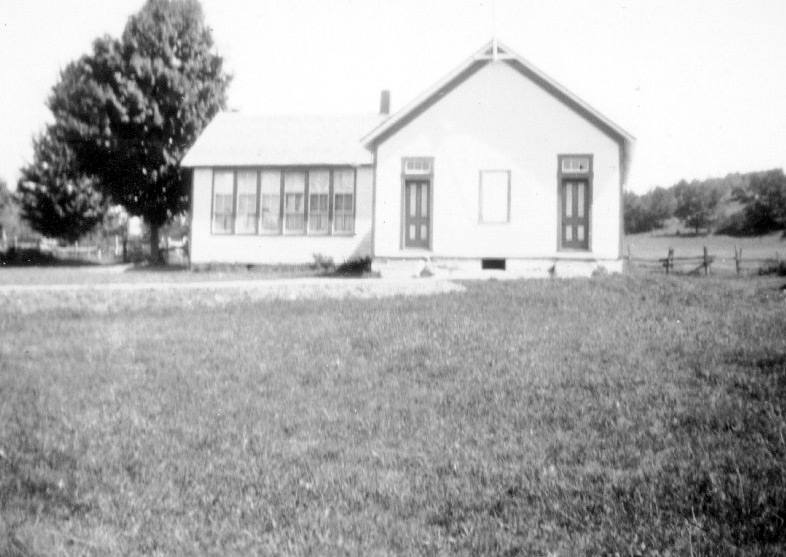School Consolidation
Once construction of the Rondout Reservoir was well under way and planning for the Neversink Reservoir was in its final stages, a second and greater threat to the town came in the form of a proposed state reorganization of public schools in the area. Until 1946, Neversink schools were divided into 13 common districts which provided a K-8 education and were prohibited by law from forming a high school.[1] For students wanting to continue their education after 8th grade, the school districts provided transportation to the large high schools located in the towns of Liberty (Sullivan County) and Ellenville (Ulster County). However, due to the relatively long distance and time needed to travel for high school, which reduced a student’s ability to assist on the family farm, very few students decided to attend school after 8th grade. Both the state education department and a small but growing number of citizens in Neversink believed that common school districts no longer provided the education required for the children in the area. Both groups agreed that the small tax base financing the schools was not adequate to provide a modern education or opportunities for extra-curricular activities necessary for students to properly prepare for success in a modern society and economy.[2]
In 1945, the New York State Education Department announced its solution to this problem with the publication of the Rapp-Coudert “Master Plan.” This plan outlined the intention of New York State to close the Neversink schools and send all students to the larger established school districts of Liberty and Ellenville.[3] While this plan saved the state money and offered a modern, quality education for the children of Neversink, the consolidation plan concerned the citizens of Neversink in two ways. First, “the hardships [of] long hours on the road, and the physical effort” just to get to school for high school students living in Neversink would be extended to the K-8 students. Many felt that the commute alone made “it impossible for [Neversink] students to compete with children nearer the school.” In response to this concern, the Rapp-Coudert committee coldly responded that “better roads and better buses would bring Liberty and Ellenville schools much closer to the area in the future.”[4] Second, the community perceived this consolidation as a threat to the continuation of functioning hamlets because of the disastrous results of similar consolidations in other rural areas whose communities collapsed once the local schools were closed.


Left: Hamlet of Neversink School House circa 1933 one of 13 common school districts in Neversink prior to consolidation Right: Tri-Valley
Central School (Downloaded from smith-miller-associates.com)
Citations:
1. There are three main types of school districts. Common school districts operate schools for K-8. Due to the legislation creating them, they lack legal authority to operate a high school but remain responsible for ensuring a secondary education for their residents. Neversink common schools were managed by a sole trustee. Union free school districts are formed from the consolidation (or “union”) of two or more common districts and are “free” from the restrictions preventing the operation of a high school program (but they are not required to operate a high school) and are administered by a school board consisting of 3-9 members. Central schools are formed by combining any number of common or union free districts and must provide a K-12 education (http://spackenkillschools.org downloaded on 23 October 2012).
2. Phyllis Coombe, Tri-Valley 50th Anniversary Supplement (Grahamsville: Tri-Valley Central School, 2002), 1.
3. “Neversink Residents Want to Set Up Own Central District.,” Liberty Register, 3 May 1945, 4.
4. “Neversink Residents Want to Set Up Own Central District.,” Liberty Register, 3 May 1945, 4.
Daniel Curry
George Mason University
Last Updated 14 May 2014
copyright May 2014